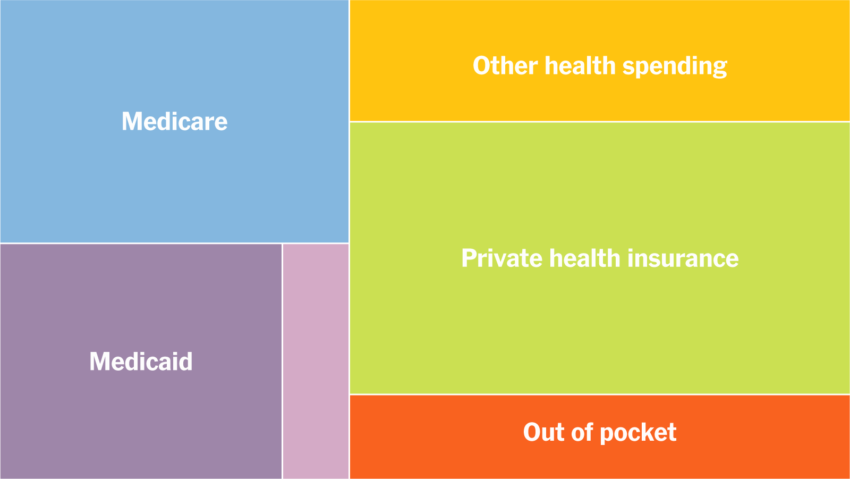Medicare, the federal health insurance program primarily for individuals aged 65 and older, as well as certain younger people with disabilities, provides essential medical coverage to millions of Americans. Understanding the costs associated with Medicare is crucial for beneficiaries to effectively plan their healthcare finances. This guide will cover the various parts of Medicare, their associated costs, and other essential details.
Overview of Medicare
Medicare is divided into four parts, each covering different aspects of healthcare:
- Part A (Hospital Insurance): Covers inpatient hospital stays, skilled nursing facility care, hospice care, and some home health care.
- Part B (Medical Insurance): Covers outpatient care, doctor services, preventive services, and some home health care.
- Part C (Medicare Advantage): An alternative to Original Medicare (Parts A and B) offered by private companies approved by Medicare, often including additional benefits.
- Part D (Prescription Drug Coverage): Covers prescription drugs, including many recommended shots or vaccines.
Costs Associated with Medicare
Medicare Part A Costs
1. Premiums:
- Premium-Free Part A: Most people don’t pay a premium for Part A if they or their spouse paid Medicare taxes while working for at least 10 years (40 quarters).
- Premium for Those Who Don’t Qualify:
- If you paid Medicare taxes for fewer than 30 quarters, the standard Part A premium in 2024 is $499 per month.
- If you paid Medicare taxes for 30-39 quarters, the standard Part A premium is $274 per month.
2. Deductibles and Coinsurance:
- Inpatient Hospital Stay:
- Deductible: $1,600 for each benefit period.
- Coinsurance: $0 for the first 60 days of each benefit period, $400 per day for days 61-90, and $800 per each “lifetime reserve day” after day 90 for each benefit period (up to 60 days over your lifetime).
- Skilled Nursing Facility Care:
- $0 for the first 20 days of each benefit period.
- $200 per day for days 21-100 of each benefit period.
- All costs for each day after day 100 in a benefit period.
Medicare Part B Costs
1. Premiums:
- The standard Part B premium amount in 2024 is $174.70 per month.
- Higher-income beneficiaries pay more based on their income. This is known as the Income-Related Monthly Adjustment Amount (IRMAA).
2. Deductibles and Coinsurance:
- Annual Deductible: $233.
- After the deductible is met, beneficiaries typically pay 20% of the Medicare-approved amount for most doctor services (including most doctor services while you’re a hospital inpatient), outpatient therapy, and durable medical equipment.
3. Part B IRMAA:
- Depending on income, beneficiaries pay between $174.70 and $578.30 per month.
Medicare Part C (Medicare Advantage) Costs
- Premiums: Vary widely depending on the plan chosen. Some Medicare Advantage plans have $0 premiums.
- Deductibles, Copayments, and Coinsurance: Also vary by plan. Plans may have different costs and rules for services.
- Out-of-Pocket Maximums: Medicare Advantage plans have a maximum out-of-pocket limit for Part A and Part B services, which can vary by plan but cannot exceed $8,300 for in-network services in 2024.
Medicare Part D Costs
1. Premiums:
- Vary by plan. The national base beneficiary premium for Part D in 2024 is $32.74, but actual premiums vary depending on the specific plan and coverage chosen.
- Higher-income beneficiaries pay an additional cost, known as Part D IRMAA, which ranges from $12.70 to $77.90 per month.
2. Deductibles and Cost Sharing:
- Annual Deductible: The maximum deductible is $505 in 2024, though some plans have no deductible.
- Copayments/Coinsurance: Vary by plan. After the deductible, beneficiaries pay either a copayment or coinsurance for their prescriptions until they reach the coverage gap (donut hole).
- Coverage Gap (Donut Hole): Begins after you and your plan have spent $4,660 on covered drugs. During this phase, you pay 25% of the cost of covered brand-name and generic drugs.
- Catastrophic Coverage: After spending $7,400 out-of-pocket in 2024, you pay a small coinsurance or copayment for covered drugs for the rest of the year.
Additional Medicare Costs and Programs
1. Medicare Supplement Insurance (Medigap):
- Medigap policies are sold by private companies and help pay some of the healthcare costs that Original Medicare doesn’t cover, such as copayments, coinsurance, and deductibles.
- Medigap premiums vary widely depending on the plan chosen, the insurer, and the state.
2. Medicare Savings Programs (MSPs):
- MSPs help pay Medicare premiums, and in some cases, may also pay Medicare Part A and Part B deductibles, coinsurance, and copayments.
- Programs include Qualified Medicare Beneficiary (QMB), Specified Low-Income Medicare Beneficiary (SLMB), Qualifying Individual (QI), and Qualified Disabled and Working Individuals (QDWI).
3. Extra Help Program:
- A federal program to help pay for Part D prescription drug costs, including premiums, deductibles, and copayments.
- Eligibility is based on income and resources.
Factors Influencing Medicare Costs
- Income Level: Higher-income beneficiaries pay higher premiums for Part B and Part D due to IRMAA.
- State of Residence: Medigap premiums and eligibility for Medicaid and other assistance programs vary by state.
- Plan Choice: Costs can vary significantly depending on whether you choose Original Medicare with a Medigap policy and Part D plan or a Medicare Advantage plan.
- Healthcare Needs: The amount and type of healthcare services needed can affect overall out-of-pocket costs.
- Provider Choices: Whether you see providers who accept Medicare assignment can impact costs.
Conclusion
Medicare provides crucial healthcare coverage for millions of Americans, but understanding its costs is essential for effective financial planning. From premiums and deductibles to copayments and coinsurance, the expenses associated with Medicare can vary widely based on several factors. By comprehensively understanding these costs and considering additional coverage options like Medigap and Medicare Advantage, beneficiaries can make informed decisions to optimize their healthcare coverage and manage their expenses effectively.

